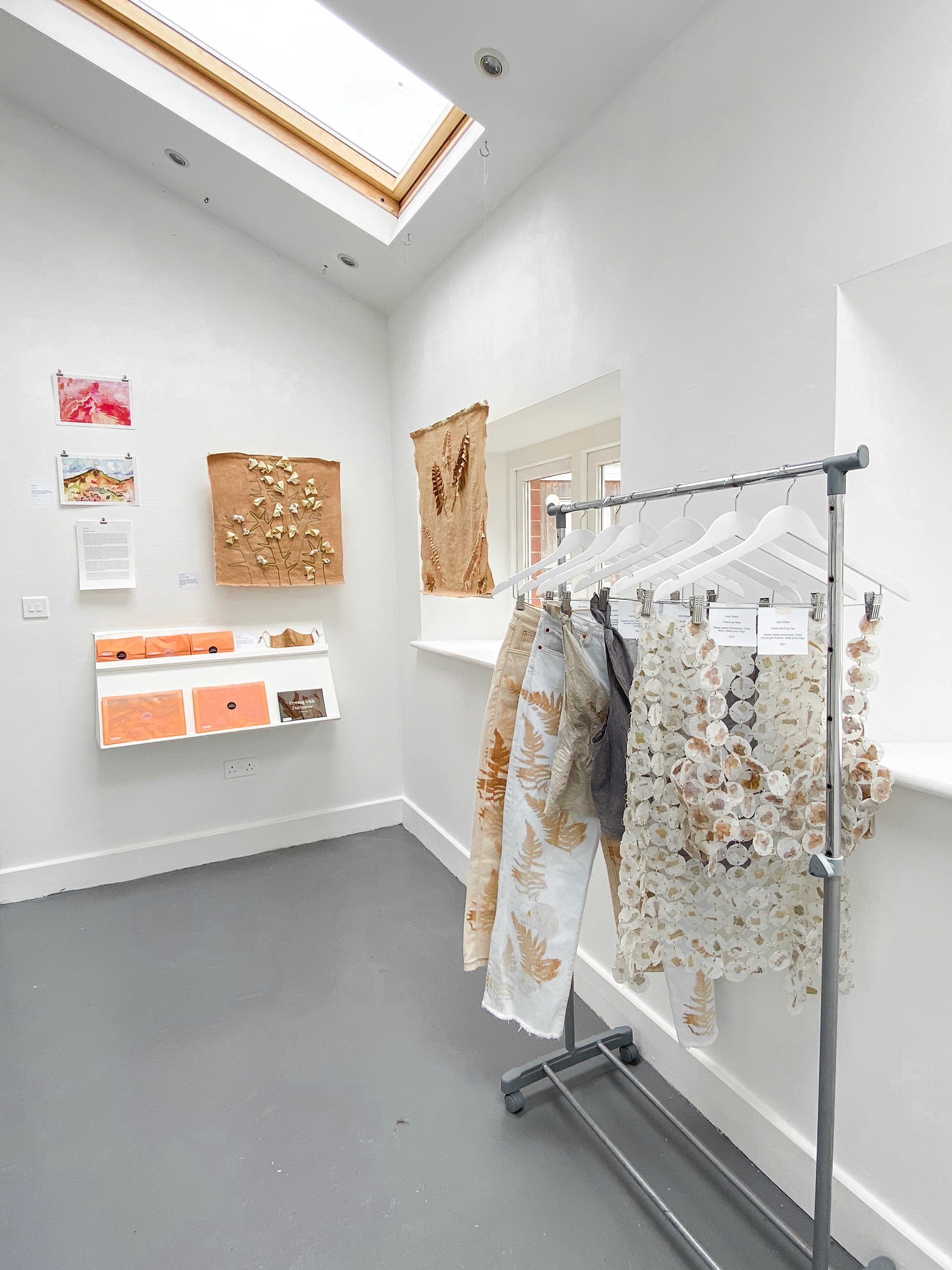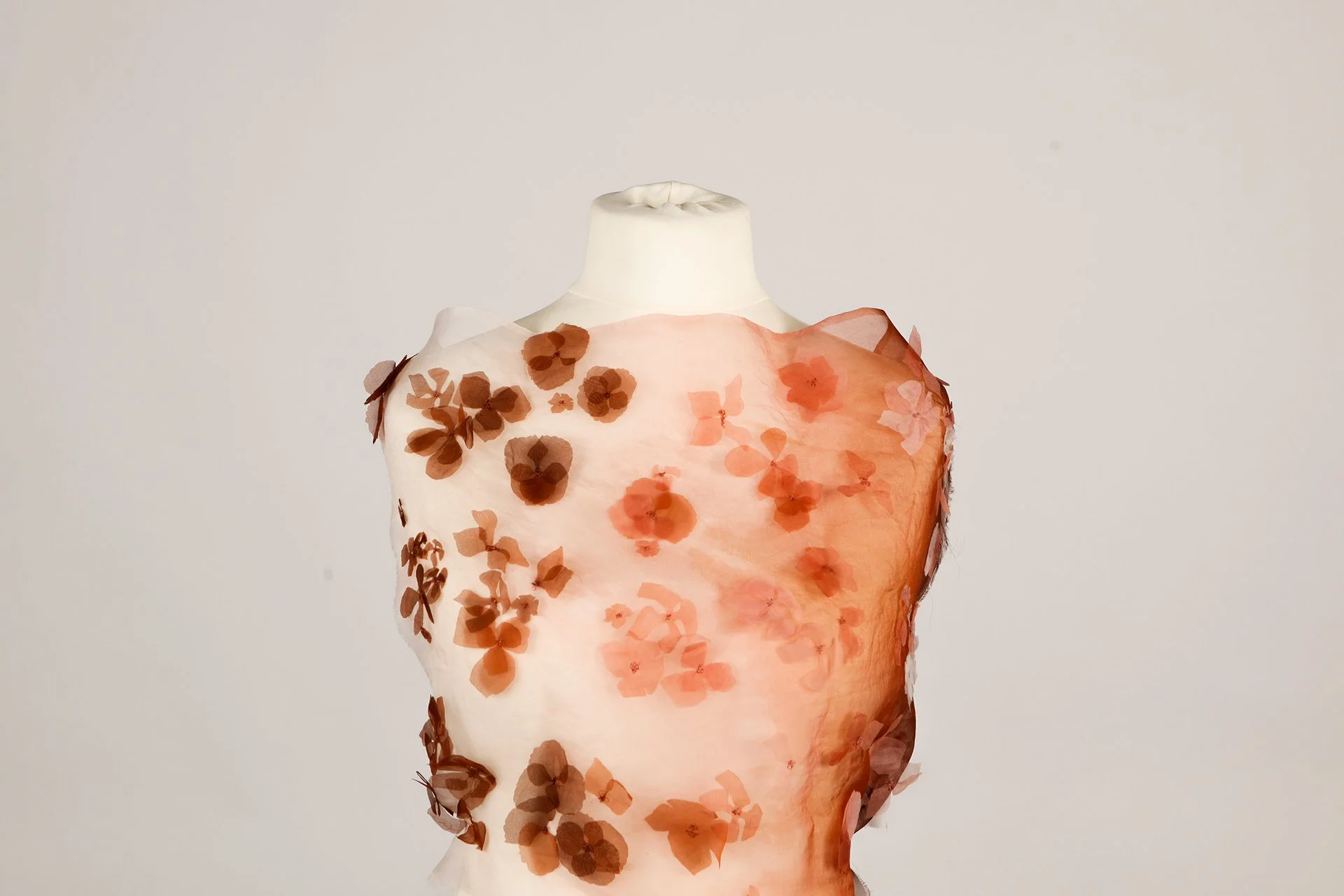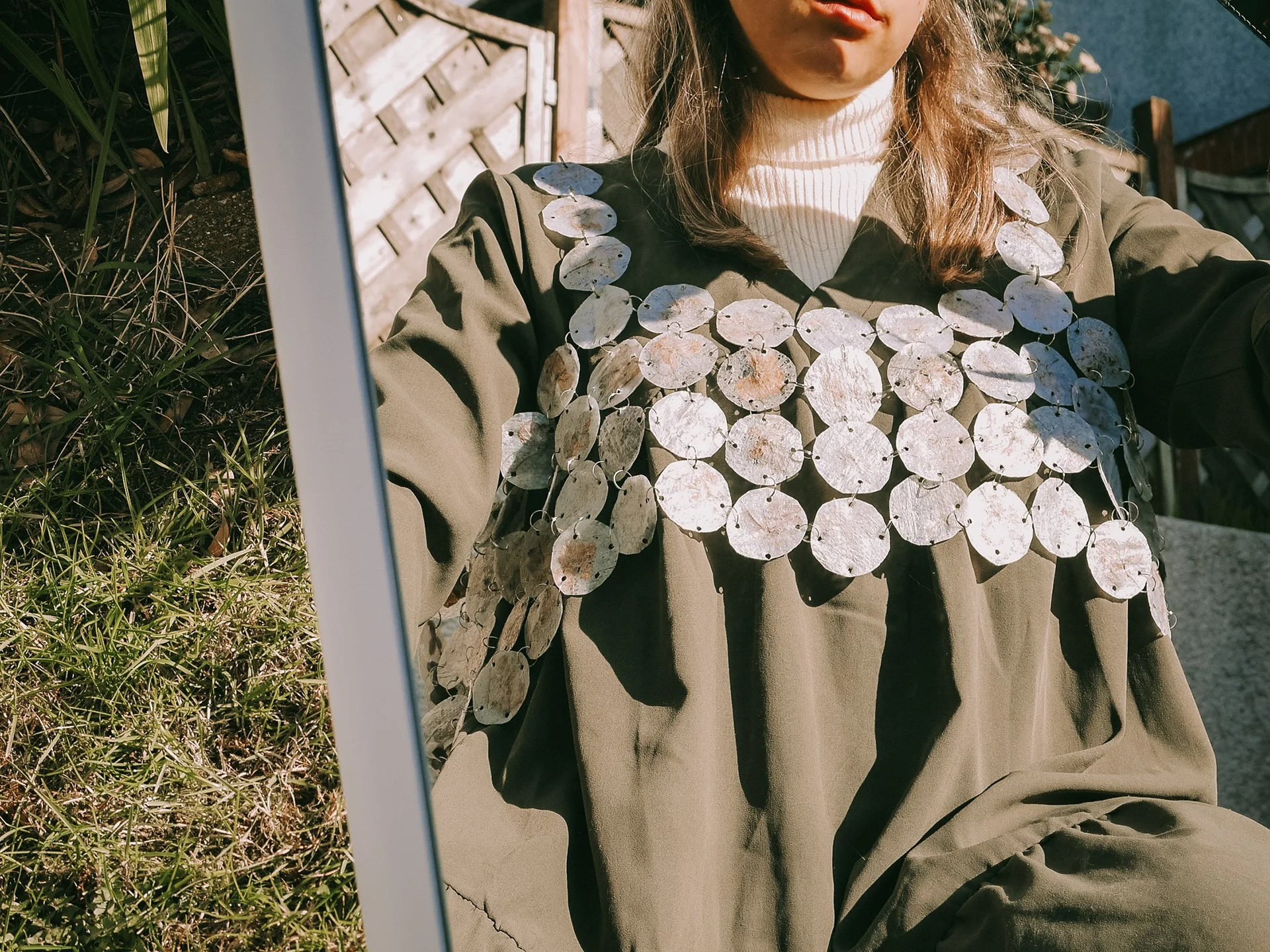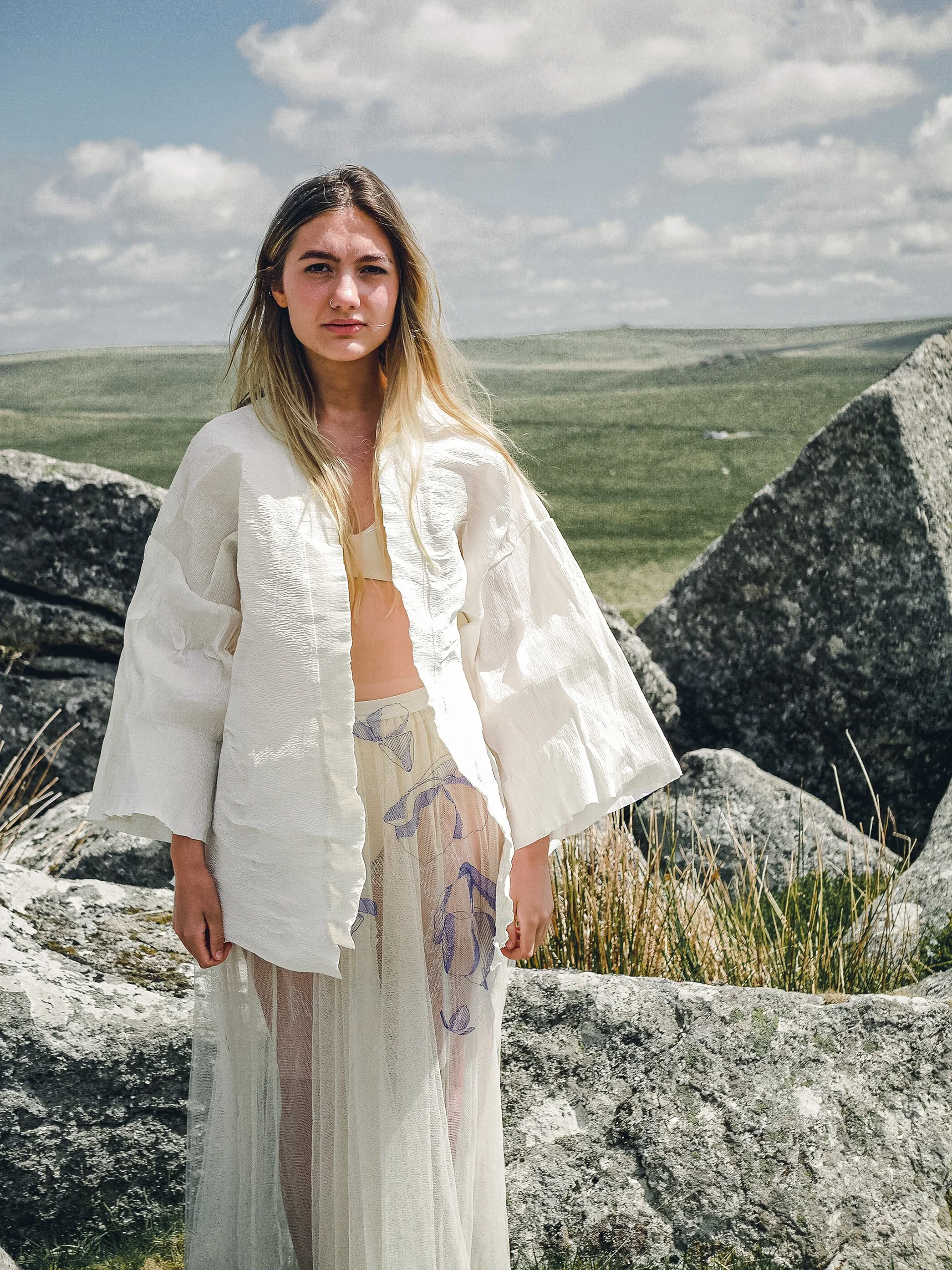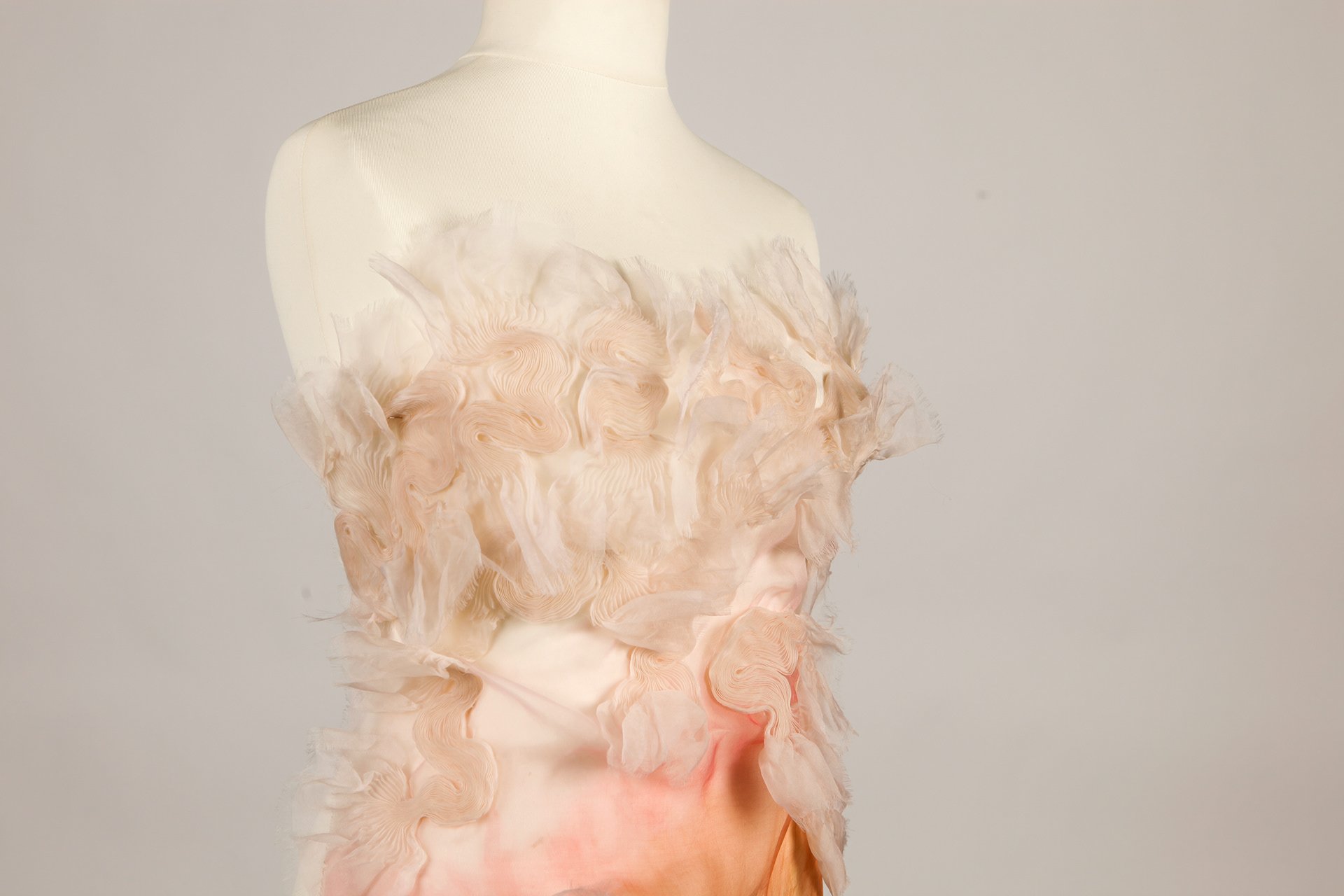Sustainability is a Hill to Dye on: Talking Textiles with Jess Strain
Words by Mia Foale, Editor in Chief. Images courtesy of Jess Strain.
The past fortnight of COP26 and the media attention surrounding it has made us all reconsider our responsibility as individuals to work towards halting the climate crisis. Nowhere is this more true than the fashion industry, which has long come under fire for overproduction, waste and mass-landfill contribution, to name only a few. Whilst we ponder our ability to create and consume ethical fashion, some have been doing this for a long time already, establishing their brands with an ethos of sustainability and a defiant turn away from fast fashion. We chatted to Jess Strain, sustainable textile artist and founder of Ovrbloom about the future of fashion and her work.
Hi Jess! Could you tell me a little bit about yourself and how you came to work in sustainable textiles?
I was about 10 years old when I set my sights on the world of fashion. It was only through my art foundation course that I realised it was the pattern, colour and texture of fabric that I truly loved. My creative practice was further honed throughout my textiles degree at Loughborough University. I’ve always had an interest in sustainability, I turned vegetarian aged 12 and began participating in activist campaigns whilst at University; naturally this permeated into my art work. Becoming ever more aware of the climate crisis has only heightened the industry’s awareness of the need for disruptive textile design which I hope to have a lasting impact on throughout my career as a sustainable textile designer.
You've said that you employ heritage craft techniques in your work, which suggests an idea of looking back to historical, or long established craft practice. Although sustainability is not a new idea, it's definitely having a renewed focus right now - do you think the key to sustainability is to look backward as much as we look forwards?
Absolutely; going back to timeless and simple methods of mending is more important now than ever. Using what you already own and seeing what you can repurpose is key. We can’t continue to use virgin materials forever, it simply can’t be sustained. Each year, Earth overshoot day gets earlier and earlier, if this isn’t a wake up call I don’t know what is. I’ve been working with a social enterprise in Devon called Mend Assembly, they offer a mending service which has proved incredibly popular. By using services like this, the benefits are twofold; you are not only able to repair your own clothing but can also help to create the appetite for traditional seamstress and embroidery skills in the community.
During an internship at an embroidery studio in London, I had the honour of being taught by tutors from the Royal School of Needlework. It was in these classes that I learnt limerick lace, tambour beading and goldwork. All of these techniques are hundreds of years old and aren’t taught in school anymore, this is largely due to digital machinery taking over these craft processes in industry. What was once done by hand is now outsourced to huge industrial machinery overseas for a fraction of the price. This is something that needs to be used to our advantage; using machinery for repetitive, copy and paste stitching is perfect. Something that can’t be replaced is the creative eye; this is something that machinery cannot replicate. This relationship between humans and digital machinery must be fostered.
Aside from sustainability, what inspires the pieces you design and create? Do you have a planned out creative process you always follow to get inspiration, and then design and create, or does it vary with time and context?
My surroundings play a huge part in my creative practice, I grew up surrounded by Dartmoor National Park and the stunning South Devon coastline. Spending 4 years at a landlocked University really gave me an appreciation of the natural beauty surrounding me when I returned home to Devon during the first Covid lockdown. I find it most beneficial to begin the design process by getting out of my own head. Going to exhibitions, open studios and getting out into nature is what sparks it all off for me. From this, I enjoy drawing and mark making, playing around with colour and different drawing media to create compositions that I can begin to create fabric samples from. It’s all about generating ideas through visual media.
One of your standout pieces is the Biodegradable Kimono, which is absolutely gorgeous and won you an award earlier this year (congratulations!). Can you explain more about the process of designing and creating this piece? What was the inspiration behind it?
Thank you! The idea for this kimono spawned from research I undertook during my final year at University. I looked at the idea of lifecycle assessments for garments and using the most appropriate material for the intended lifetime of the garment. This research was undertaken by the Centre for Circular Design at UAL Chelsea. For example, using a low energy material such as paper, for a fast fashion garment which is only intended to be worn 2 or 3 times, means that the Earth isn’t expending unnecessary energy on a material for the inappropriate garment life cycle. This way, we aren’t using high energy resources (such as polyester which takes the Earth millions of years to produce and 200 years to decompose) for items which will only be in use for a couple of months.
I did a little digging into cellulose materials that offered the desirable tactile qualities and I quite quickly hit a brick wall. Industry hasn’t quite caught up with research and the materials I was after didn’t exist commercially. I found that a lot of materials are often blended with unrecyclable materials for their tactile qualities, but this renders them completely useless as they would take 100+ years to decompose if blended with plastics. I chose to use Italian crepe paper as it offered some flexibility, durability and mobility to the garment due to its pleated nature, and it is 100% cellulose so it will decompose relatively quickly.
You've recently started your brand, Ovrbloom, which creates clothing and accessories from waste textiles. Can you tell me about what the brand stands for, and the items you sell/ plan on selling?
Ovrbloom is my sustainable textile business, I will be making accessories and soft furnishings such as tote bags, scarves and cushion covers. I will source the most transparent and least damaging materials possible whilst naturally dyeing all the pieces from my very own studio. I have been exploring natural dyeing over the last few years. I have enjoyed experimenting with different plants, traditional and experimental, to create a wide range of colours and tones. I love the depth that comes with natural dyes, somehow they all work together as they all have the same beautiful earthy undertone.
What stands Ovrbloom apart from the rest, is that I will create accessible transparency reports for every single product. This is so that we can start to open up a conversation around where our clothes are made and who makes them, it will also encourage customers to think more critically around where the rest of their wardrobe is made and start to demand the same from other retailers.
What do you think the future holds for sustainable fashion? What would you like to see change?
Transparency is a huge problem that needs to change. It’s great that big high street brands are making a shift towards using recycled fibre blends and organic cotton in certain ranges. However there is no way of accessing information on how and where the raw fibres are sourced, where the garment was constructed or even if guidelines and regulations have been obeyed for ethical manufacture. Glossy PR campaigns are often found in the form of a ‘conscious collection’ with high price tags and an earthy photoshoot to boost the brand's image as eco and sustainable. When systemically the company is still pumping out huge trend focused drops that are poorly made in unethical factories with styles that will go out of fashion in a few months time. Design today needs to be slower, timeless and with a more concerted effort to become more holistically sustainable. This means rethinking from the bottom up how the company works. Basic things like paying everyone a living wage, using ethical manufacturers and ensuring that you’re using those that are geographically closer to reduce the company's carbon footprint. These are steps that the big brands need to make, they need to lead by example and create more affordable avenues of manufacture for smaller companies to follow suit.
You can find out more about Jess’ work by visiting: @jess.strain / @ovrbloom / www.ovrbloom.co.uk / www/jessicastrain.co.uk

